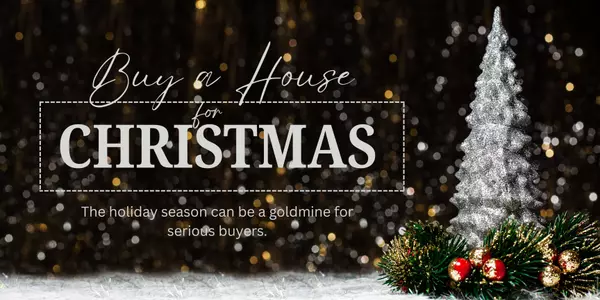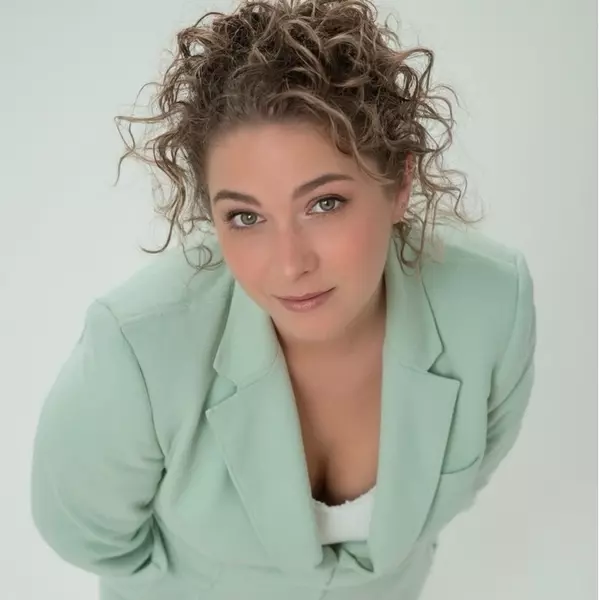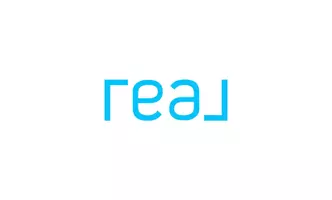Buying a Home When You Don’t Have a Big Down Payment: Your Guide

📲 Call or text (336) 567-5843
Book a 15-minute consultation
1. Market Snapshot: Where We Stand Right Now
Here’s a look at today’s market environment so you can see how your timing and strategy matter:
-
The average 30-year fixed mortgage rate is hovering around 6.22% as of early November 2025. Freddie Mac
-
Listings are sitting longer: the typical home spent 62 days on the market in September 2025 — up 7 days year-over-year. Realtor
-
National median list price flat (~$425,000) yet in some regions prices are softening slightly. Realtor+1
-
Inventory is gradually increasing and there’s emerging buyer leverage (more flexibility for closing cost credits, concessions).
-
Escrow/ongoing costs are up significantly — the average monthly escrow payment (taxes + insurance) has jumped ~45% from 2019 to 2025. Cotality
What that means for you: Even though you may not have a big down payment, the market is giving more room for negotiation than the super-heated 2020-21 period. But affordability is still tight — rates above 6% and higher ongoing costs mean your monthly payment and debt burden still matter a lot.
2. Loan Options When You Have Little or No Down Payment
If you don’t have a large down payment, you still have options — you just need to adapt strategy.
a) USDA Single Family Housing Guaranteed Loan (“USDA zero down”)
-
Designed for eligible rural areas, moderate income households. Rural Development+1
-
You can purchase with 0% down (100% financing) in eligible areas. Fairway Independent Mortgage Corp+1
-
Be aware: income limits, location restrictions, and you may end up paying a “guarantee fee” or higher closing cost.
-
Great fit if you qualify (rural location, income within limit).
b) FHA Loan
-
Low down payment option: as low as ~3.5% down if credit score meets minimum.
-
More relaxed credit standards than conventional in some cases.
-
Comes with upfront mortgage insurance premium (MIP) + ongoing MIP.
-
Seller concessions allowed up to 6% of purchase price. FHA.com+1
-
If you don’t have any down payment, you can pair this with down payment assistance or gift funds — subject to rules.
c) VA Loan (for eligible veterans)
-
For eligible Veterans, active duty, or certain surviving spouses.
-
Can offer 0% down financing (no minimum down). Wikipedia
-
No private mortgage insurance (PMI) though there is a VA funding fee (which sometimes can be rolled in).
-
Seller concessions may be allowed up to 4% of loan amount (not including typical closing costs) in many cases. Veterans United Home Loans
d) Conventional Loans + Down Payment Assistance (DPA)
-
Conventional loan with smaller down payment (e.g., 3%–5%).
-
Many state/local programs (for example in North Carolina: NC 1st Home Advantage Down Payment) offer grants or deferred seconds to help with down payment. NCHFA
-
You’ll need good credit, stable income, and meet debt-to-income (DTI) rules.
-
Note: Even with DPA you may still need some cash out of pocket for earnest money, inspections, appraisal, etc.
3. Up-Front Costs You Need to Plan For
Even if down payment is minimal or zero, you typically still have some costs:
-
Earnest Money Deposit (EMD / “Earnest Money”): This is your good-faith deposit when you get a contract accepted. This money is usually credited toward your closing costs or down payment.
-
Down Payment (DP): If required (e.g., FHA 3.5%, conventional 3%+, etc.). If zero-down via USDA/VA then DP = $0.
-
Appraisal Fee: The lender orders an appraisal to verify value. Expect a few hundred dollars (often $400-$700 in many markets, varying by home size/region).
-
Home Inspection(s): You should always inspect the home (general inspection, maybe termite/pest, radon, etc.). Budget ~$300-$600+ depending on size and region.
-
Closing Costs: These include origination fee, title insurance, recording fees, prepaid items (taxes, insurance), escrow setup, maybe discount points. On average in NC buyers incentives approximately 2% of sale price paid by seller, and other buyer costs exist. Clever Real Estate
-
Prepaid Items & Reserves: Lender may require upfront homeowner’s insurance, property taxes prorated, initial escrow fund reserves.
-
Mortgage Insurance / Funding Fee: If FHA you have MIP; if VA you may have VA funding fee; if USDA you may have guarantee fee — these can often be financed into loan but still matter.
-
Closing Credits: The earnest money is typically credited at closing toward your cash-to-close. So while you may not have down payment, you still need to plan for EMD and any minimal costs lenders require.
Example scenario
Let’s say you are buying a $300,000 home with an FHA loan requiring 3.5% down ($10,500). You qualify for state DPA that covers $10,000 of the down payment. You still need to bring earnest money ($2,000) + inspections/appraisal + closing costs ($4,000) = total maybe ~$6,000-$8,000 out of pocket. Over time, you look for seller concessions + assistance to reduce your out-of-pocket.
4. Seller Concessions: How Sellers Can Help
One of the smartest moves when you’re low-cash is negotiating seller concessions.
-
A seller concession (aka seller closing cost credit) means the seller agrees to pay some of your closing costs, prepaid items, lender credits, etc. Newcastle Loans+1
-
Limits depend on loan type:
-
FHA: up to 6% of purchase price. FHA.com+1
-
USDA: up to 6% of loan amount. My Mortgage Insider
-
Conventional: if down payment <10% → up to ≈3%; if 10-25% down → up to ≈6%; etc. Rocket Mortgage
-
-
Important: Seller concessions cannot be used for your minimum required down payment (for example if you have a 3.5% down requirement, seller assistance cannot totally cover that in most cases).
-
You must negotiate them in your purchase offer/contract — you don’t automatically get them. The seller must agree.
-
Especially in current market (with inventory increasing and longer days on market) sellers may be more willing to offer credits to close the deal.
5. Strategy Checklist for Buyers with Little Cash
Here’s how to proceed:
-
Get pre‐approved with a lender who knows low-down programs (USDA/VA/FHA + DPA).
-
Know the local DPA programs in your state (e.g., North Carolina has down payment assistance up to $15,000).
-
Calculate cash-to-close: even zero down may still require earnest money, inspection fees, prepaid items, etc. You need some cash.
-
Target your property budget wisely: with ~6% mortgage rate, a $300,000 loan means ~$1,800-$1,900/month principal+interest (rough estimate) before taxes/insurance. Ensure your debt-to-income is solid.
-
Inspect carefully: When you’re cash-tight, you don’t want expensive surprises after closing.
-
Negotiate seller credits: Ask seller to contribute toward closing costs and prepaid items.
-
Avoid overextending: Just because you can buy with low down doesn’t mean you should buy beyond what you can manage comfortably. With escrow/taxes up, your total housing payment must remain reasonable.
-
Build a safety cushion: Even if down payment is low, you’ll still have ongoing costs (maintenance, taxes, insurance).
-
Consider refinance later: If interest rates drop, you might refinance to reduce monthly payments down the line.
6. Why You Can Still Consider Buying Now
-
Rates, while elevated compared with pandemic lows, are not skyrocketing; the ~6.2% rate is moderately accessible.
-
Market is giving more buyer leverage (longer time on market, more homes listing, more price reductions) which supports negotiating concessions. Realtor
-
Some zero-down or low-down programs exist (USDA, VA, DPA) so you can enter homeownership sooner rather than later — and start building equity instead of renting.
7. Cautions & What to Avoid
-
Do not assume “zero down” means “zero cash out-of-pocket”. Inspections, appraisal, closing, prepaid items still cost.
-
Avoid buying a home if your monthly payment will stretch you too thin — especially when escrow/taxes/insurance may rise.
-
Be cautious of homes needing major repairs unless you budget for them.
-
Understand all terms of your loan: higher down means lower rate often; smaller down may mean higher monthly payments, higher amortization or mortgage insurance.
-
Make sure the property qualifies: e.g., USDA has rural area restrictions; VA has veteran eligibility; FHA has loan limits and insurance costs.
8. Final Word
If you don’t have a large down payment, you’re not out of the game. With the right program, the right lender, and smart strategy — you can buy a home. You’ll need to bring some cash, but the barrier is lower than many believe. And when you negotiate seller concessions and use down payment assistance, you can reduce the upfront load significantly.
But the key is: buy within your means. Owning a home should bring stability, not stress.
If you're ready to explore your options in the Triad area (or are just curious about what you might qualify for), I’d be happy to walk you through it. Let’s schedule a time to chat.
📲 Call or text (336) 567-5843
Book your 30-minute consultation
Best of luck on your home-ownership journey!
Warmly,
Jessica J. Baldovinos
@JessicaJBRealtor
#KeepingItΓEA⅃ | #SoldByJessica | #RealBroker

Categories
- All Blogs (531)
- Buying/Selling Raw Land (18)
- Distressed/Foreclosure Education (22)
- Divorce in NC? Own Real Estate? You Should Know... (21)
- First Time Home Buyer Education (35)
- For Real Estate Agents (15)
- FSBO Tips (37)
- Homebuyer Tips (39)
- Homeowner Tips (43)
- Market Forecast (10)
- Market Updates and Trends (40)
- NC Luxury Market Data (15)
- New Construction Homes (11)
- Real Estate Investor Education (54)
- STOP Renting! START Owning! (20)
Recent Posts










GET MORE INFORMATION

REALTOR® NCREA CREIPS | License ID: 312309

